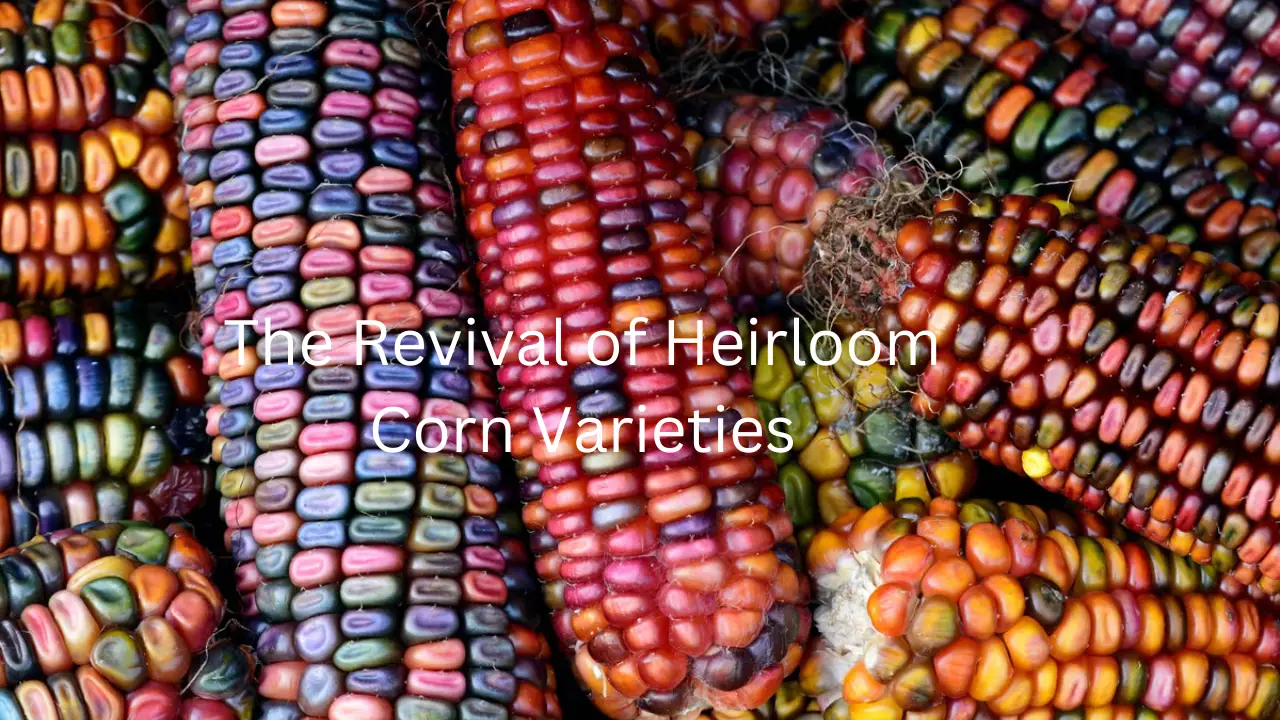
1 Yards Reusable Cheesecloth, Grade 100, Cheese Cloth for Straining Craft, 100% Cotton Unbleached Muslin Cloth Strainer for Cooking, Baking, Juicing, Cheese Making
$3.99 (as of October 22, 2024 10:19 GMT +00:00 - More infoProduct prices and availability are accurate as of the date/time indicated and are subject to change. Any price and availability information displayed on [relevant Amazon Site(s), as applicable] at the time of purchase will apply to the purchase of this product.)The Revival of Heirloom Corn Varieties: A Taste of History and Sustainability
In recent years, there has been a growing interest in heirloom corn varieties. These ancient, time-tested maize strains are making a comeback in modern agriculture and culinary circles. As we explore the revival of heirloom corn varieties, we’ll delve into the rich history behind these unique crops, their benefits, and how they are contributing to sustainable farming practices.
Introduction
Heirloom corn varieties, also known as heritage or antique corn, are traditional maize cultivars that have been passed down through generations. Unlike modern hybrid corn, heirloom varieties remain unchanged over time, preserving their original genetic makeup. This return to the past is not just a nostalgic journey but a sustainable choice that’s gaining popularity for several reasons.
What Are Heirloom Corn Varieties?
Heirloom corn varieties are typically open-pollinated and come in various colors, shapes, and sizes. They are celebrated for their unique flavors, vibrant hues, and diversity. Some well-known heirloom varieties include Glass Gem, Hopi Blue, and Oaxacan Green Dent. These varieties have been cultivated for specific purposes, from making traditional tortillas to brewing unique types of corn beer.
The Historical Significance
To truly appreciate the revival of heirloom corn, one must understand its historical significance. Native American communities have been cultivating these varieties for thousands of years, using them as staple foods. Heirloom corn has deep cultural ties, serving as a symbol of resilience and heritage.
The Decline of Heirloom Corn
With the advent of modern agriculture, heirloom corn varieties were gradually pushed aside in favor of high-yield hybrid corn. These hybrids promised greater productivity and uniformity but came at the cost of genetic diversity. As a result, many heirloom corn strains faced near-extinction.
Why the Resurgence?
The revival of heirloom corn varieties can be attributed to a growing awareness of the importance of preserving genetic diversity in our crops. Heirloom corn is seen as a genetic treasure trove, offering valuable traits for breeding programs and adaptation to changing environmental conditions.
Nutritional Value of Heirloom Corn
One of the key attractions of heirloom corn is its nutritional value. These varieties often have higher levels of essential nutrients like vitamins, minerals, and antioxidants compared to their hybrid counterparts. They also tend to be less processed, retaining more of their natural goodness.
Heirloom Corn in Modern Cuisine
Heirloom corn has found its way into modern culinary circles, where chefs and food enthusiasts are exploring its unique flavors and textures. Dishes like heirloom cornbread, colorful corn salads, and specialty tortillas have become popular, showcasing the versatility of these ancient grains.
The Environmental Impact
Sustainability is at the forefront of the heirloom corn revival. These varieties require less chemical intervention, as they have evolved to thrive in their specific environments. By promoting heirloom corn cultivation, we can reduce the ecological footprint of agriculture.
Growing Heirloom Corn
For those interested in growing heirloom corn, it’s essential to understand the specific needs of these ancient varieties. They thrive in diverse environments and can contribute to the overall health of your garden or farm. Proper soil preparation and care are crucial for a successful harvest.
Preserving Biodiversity
Heirloom corn varieties play a vital role in preserving biodiversity. As we lose crop diversity globally, we become more vulnerable to diseases and environmental changes. Growing heirloom corn can help safeguard our food supply for the future.
The Role of Farmers and Communities
Farmers and local communities are pivotal in the resurgence of heirloom corn. By supporting local growers and heirloom seed banks, we can ensure the continued availability of these unique varieties.
Challenges in Heirloom Corn Farming
While heirloom corn offers numerous benefits, it also presents challenges, such as susceptibility to pests and diseases. Farmers must employ sustainable practices and collaborate on research to overcome these hurdles.
The Culinary Delights of Heirloom Corn
Exploring heirloom corn in the kitchen is a journey of culinary delight. From sweet corn desserts to savory corn-based dishes, the possibilities are endless. Embracing heirloom corn can elevate your culinary experiences.
Sustainability and the Future
The revival of heirloom corn varieties aligns with our broader quest for sustainable agriculture. As we face the challenges of climate change and food security, these resilient ancient grains provide hope for a more sustainable future.
Conclusion
In conclusion, the revival of heirloom corn varieties is not merely a return to the past; it’s a step toward a more sustainable and diverse future. By embracing the unique flavors and cultural significance of heirloom corn, we can support local farmers, preserve biodiversity, and savor the taste of history.
FAQs
- Are heirloom corn varieties genetically modified? No, heirloom corn varieties are not genetically modified. They are open-pollinated and have preserved their original genetic makeup.
- Where can I buy heirloom corn seeds? You can find heirloom corn seeds from specialized seed banks, local farmers, and online retailers.
- What are some popular heirloom corn dishes? Popular heirloom corn dishes include cornbread, tortillas, polenta, and corn salads.
- How can I contribute to the preservation of heirloom corn varieties? You can support local farmers who grow heirloom corn, participate in seed-saving initiatives, and educate others about the importance of heirloom crops.
- What are the environmental benefits of growing heirloom corn? Heirloom corn requires fewer chemical inputs, promotes biodiversity, and contributes to sustainable farming practices, reducing the overall environmental impact.











